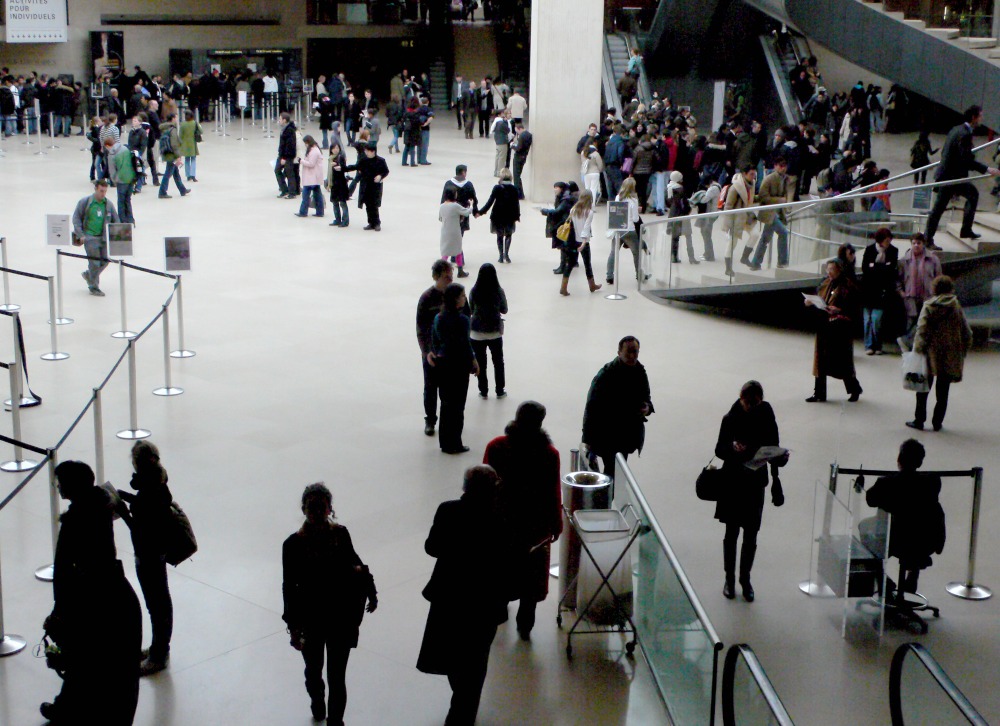Part I: Basic Methods to Improve Indoor Air Quality for Museums
 Each museum may have it’s own individually tailored mission statement but common to all museums is that they house a specific kind of collection, have hundreds if not thousands of visitors per year and provide office space to their diligently working staff. With that said, the indoor air quality of a museum is paramount to its survival and ultimate success. Not only does the air need to be kept at a certain temperature range, but it also needs to be free of harmful toxins for both collections and people. After many years of study, researchers have found any number of air-borne toxins, such as gases or fumes released from wood, acidic paper, fire-retardant fabrics and other products used in construction. Also, corrosive vapors released by certain glues, paints, fabrics and urea-formaldehyde in plywood are found to corrode metals and create poor indoor air quality. These are just some of the dangers lurking in the air, but due to the surging green building trend and the tireless work of many committed environmental organizations, we have more product options and a wider range of knowledge to eliminate these dangerous chemicals from our air. The following are the key methods to reducing pollutants in a museum’s environment: use environmentally sound materials for construction and throughout the museum, place entryway mats to reduce dust/allergens, use proper ventilation systems, this includes using a dehumidifier and always use non toxic cleaning products, it is an absolute must. We will examine 3 categories more thoroughly in respect to specifically minimizing a museum’s indoor air pollutants.
Each museum may have it’s own individually tailored mission statement but common to all museums is that they house a specific kind of collection, have hundreds if not thousands of visitors per year and provide office space to their diligently working staff. With that said, the indoor air quality of a museum is paramount to its survival and ultimate success. Not only does the air need to be kept at a certain temperature range, but it also needs to be free of harmful toxins for both collections and people. After many years of study, researchers have found any number of air-borne toxins, such as gases or fumes released from wood, acidic paper, fire-retardant fabrics and other products used in construction. Also, corrosive vapors released by certain glues, paints, fabrics and urea-formaldehyde in plywood are found to corrode metals and create poor indoor air quality. These are just some of the dangers lurking in the air, but due to the surging green building trend and the tireless work of many committed environmental organizations, we have more product options and a wider range of knowledge to eliminate these dangerous chemicals from our air. The following are the key methods to reducing pollutants in a museum’s environment: use environmentally sound materials for construction and throughout the museum, place entryway mats to reduce dust/allergens, use proper ventilation systems, this includes using a dehumidifier and always use non toxic cleaning products, it is an absolute must. We will examine 3 categories more thoroughly in respect to specifically minimizing a museum’s indoor air pollutants.
Children’s museums were early adopters of using green materials and have set the trend for many others to follow. We all know that children are always touching, tasting and feeling everything so choosing to use materials with low or no VOC is imperative to keeping them healthy and the indoor air toxin-free. Each and every product has the ability to off-gas, meaning any residual chemicals used in making the products can be released into the surrounding indoor air. This applies to every product you may use in your museum, from the construction materials and paint used to prepare for a new exhibit to display cases, printers, photocopies and more. It also includes the actual museum objects themselves, metal, wood and paint can off-gas numerous kinds of chemicals of which museums staff has less control over. So when putting a new exhibit together look carefully at your materials and see where you can choose the environmentally safe option, nowadays paint, building materials and adhesives all have low or no VOC options. Also, choose materials that are certified formaldehyde free with near-zero off gassing. Use vegetable based or eco-solvent (low VOC) inks and substrates made form recycled paper and fabrics. And for vinyls use a biodegradable PVC alternative that when exposed to landfill conditions, is broken down by microbes. All of these choices are important first steps when making the switch to a greener museum, which results in cleaner indoor air.
Here are a few online resources to help get you started on choosing safer materials:
GreenGuard.com – Sustainable Product Guide
GreenSpec.com – General overview of green products
BuildItGreen.com – General overview of green building products
Green Building Product Certifications – Overview of all third party certifications
Greenexhibits.com – Tips on how to get started with a Green Exhibit
Project Regenerate UC Davis Design Museum – Green Exhibitions